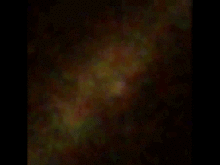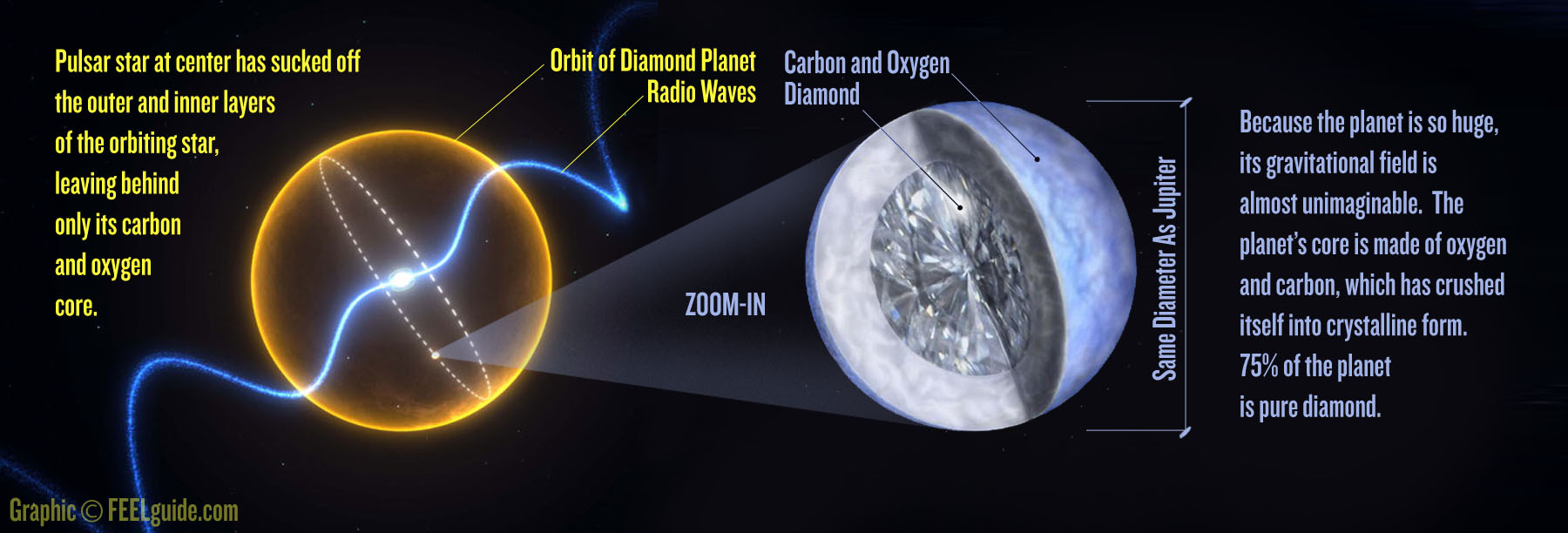TIME Magazine published a story yesterday about an incredible new astronomical discovery made in our very own Milky Way. Scientists have discovered a star that is 20 trillion miles away from Earth which is much brighter than our very own Sun; however, the star is only 15-miles in diameter and is spinning at an astonishing rate of 100 times per second (stars like this are known as “pulsars“). But the real kicker is not this star, but what’s spinning around it: a Jupiter-sized planet that is made almost entirely of diamond. But backing up for a second, the team was originally zooming in on the pulsar star to get a closer look at it when they found the gargantuan diamond orbiting it. To understand how and why a Jupiter-sized chunk of diamond is spinning around that pulsar, one first needs to know what a pulsar is:
PULSAR: a superdense chunk of matter left over when a massive star explodes, then collapses in on itself. If what’s left over weighs more than three times as much as the sun, it collapses forever, forming a black hole. But if it’s a bit smaller, it turns into a whirling neutron star whose intense magnetic field generates a beacon of radio waves that sweeps across the universe like the beam of a lighthouse — in this case, flashing more than 10,000 times every minute. When pulsars, as they became named, were discovered in the 1960s, they were nicknamed LGM for “little green men.” Nobody could imagine a natural force that could generate such a rapid, precisely timed series of radio blasts (NOTE: scientists have since discovered hundreds upon hundreds of pulsars).

When there is a slight variation in the timing of the pulses it usually means there is an object spinning in orbit around the pulsar. In this case however, that object used to be star as well! Yes, I’m using an exclamation point because it is apparently that big (and rare) of a deal to discover this kind of duo. At one time these two stars were spinning around each other. The pulsar star was originally 10X bigger than our own Sun, but it eventually exploded and collapsed, thereby creating a tiny, super bright “neutron” star with a gravity so intense it pulled in the other star towards it. The other smaller star was more like the size of our Sun, but the gravity from the powerful neutron star sucked all of the outer (and eventually inner) layers off the Sun-sized star leaving behind its carbon and oxygen center — which is roughly the size of Jupiter. And because a Jupiter’s-worth of carbon would have such a powerful gravity of its own, it has crushed itself into crystalline form — in other words, diamond. Although scientists cannot know for certain exactly how much of the planet is made of diamond, they are 100% certain it must be a minimum of 75%. WOW. You can read the entire story over at TIME Magazine.


